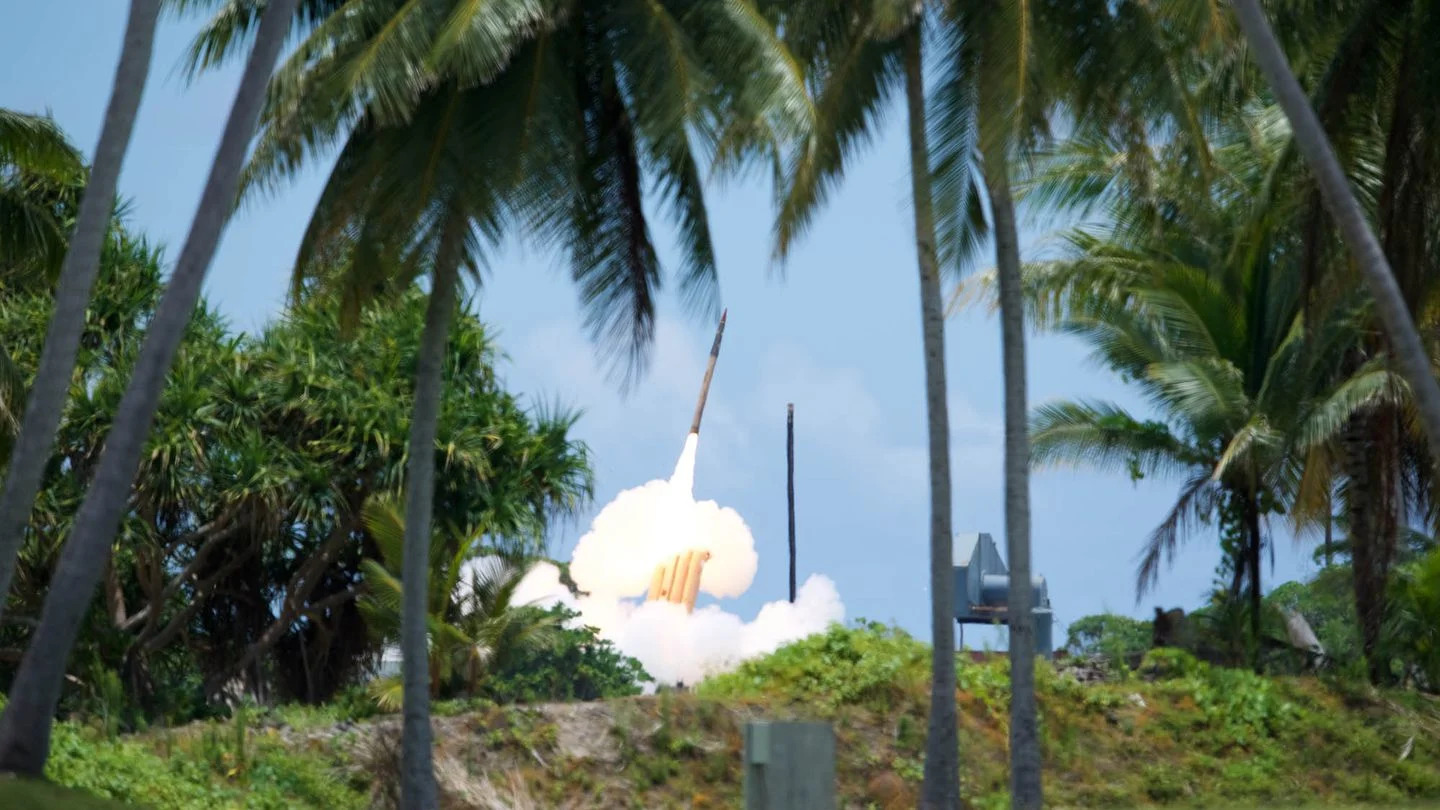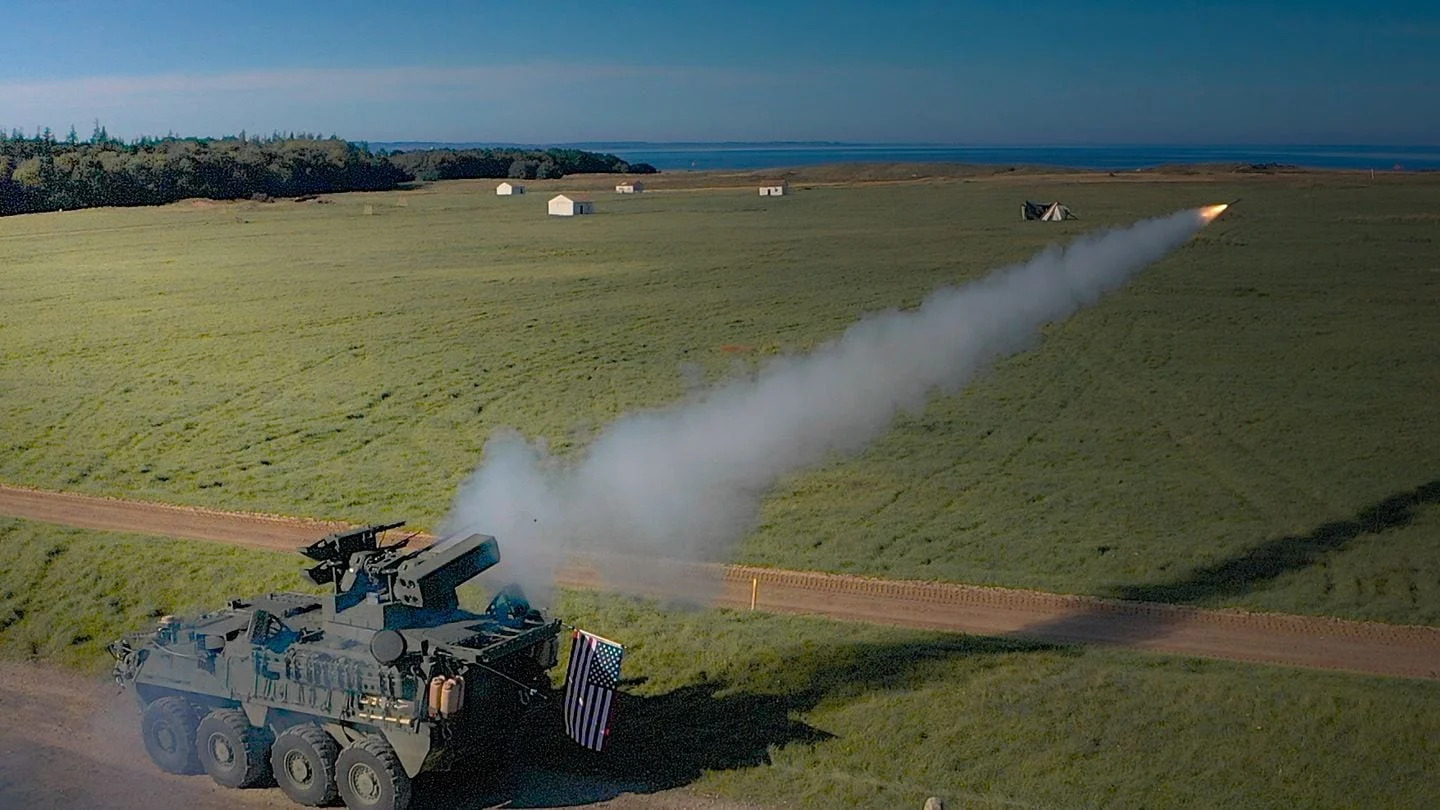The U.S. Army plans to test this month whether its key command-and-control system can operate its Terminal High Altitude Area Defense System, according to the service’s lead on air and missile defense modernization.
The Army originally developed the Integrated Battle Command System as the brains of a future air and missile defense system, intending to link it with a new 360-degree radar and potentially new launchers in order to replace the aging Patriot air- defense system component by component.
“When we look at our prioritization of capabilities that we want to integrate on the IBCS, THAAD is right there currently listed as a priority. I won’t get into where in the priority list, but it is absolutely there,” Col. William Parker told Defense News in a recent interview.
As part of the Army’s effort to connect a web of sensors and shooters on the battlefield, it spent more than a decade developing IBCS to work with radars like the Sentinel A4, Patriot, Lower Tier Air and Missile Defense Sensor and the Indirect Fires Protection Capability. The latter, which is still under development, is expected to be capable of defeating rockets, artillery, mortars, cruise missiles and drones.
IBCS experienced years of delays related to its increasing mission sets and technical problems in an initial 2016 limited-user test. The Army spent years ironing out software issues through follow-on user tests. The service held an initial operational test and evaluation in 2022 and declared it fully operationally capable in the spring of 2023.
The Army will hold a full operational test and evaluation for IBCS in the fourth quarter of fiscal 2024 and plans to field the capability to the first unit around the middle of fiscal 2025, Parker said.
Now that IBCS has cleared a variety of hurdles, Parker’s outfit — the Air and Missile Defense Cross-Functional Team, which is part of Army Futures Command — is working to integrate the command-and-control technology with a number of other systems, including THAAD.
The cross-functional team is scheduled to experiment with that integration at Project Convergence, which kicks off Feb. 23 and will run through mid-March. Project Convergence is a campaign of learning where the joint force experiments with capabilities it envisions needing against high-end threats and advanced adversaries.
The key effort is centered around joint integration of sensors and shooters, and the Army will push data through IBCS over to THAAD’s command and control in order to see how much bandwidth it can handle, Parker said.
“You have a whole lot of sensors on the battlefield, and the more ability that we have to take advantage of those for providing data, for providing situational awareness, whatever the case may be, is just going to help our commanders on the ground,” Parker said.
While IBCS is now a program of record and will mostly live under the purview of Program Executive Office Missiles and Space, the cross-functional team is continuing to work on “agile development” of the technology. The team is continuously looking at what software upgrades to the system are possible to incorporate in order to expand capabilities and then pushing those upgrades into IBCS.
US Army’s short-range air defense efforts face review board
The Joint Capabilities Board is scheduled to consider approving the U.S. Army’s Maneuver-Short Range Air Defense system requirements this spring, according to Col. William Parker, the service’s lead on air and missile defense modernization.
The board brings recommendations to the Joint Requirements Oversight Council, which supervises the development of new capabilities and acquisition efforts, for final approval of program requirements.
The M-SHORAD system’s development took place in record time as the result of an urgent operational need identified in 2016 for the European theater. The Army received the requirement to build the system in February 2018. It took 19 months from the time the service generated the requirement to the delivery of prototypes for testing in the first quarter of 2020.
The first platoon to receive the M-SHORAD, a Stryker combat vehicle-based platform that includes a mission equipment package designed by Leonardo DRS and RTX’s Stinger vehicle missile launcher, deployed to Europe in 2021.
The Army is now fielding its third M-SHORAD battalion at Fort Cavazos, Texas. The first M-SHORAD battalion remains in Germany, and the second is based at Fort Sill, Oklahoma.
“When we look at Increment 1 of M-SHORAD, that initially came out as part of a directed requirement, so we’re following up right now through the requirements process,” Parker told Defense News in a recent interview.
Parker’s team briefed protection capability to the Functional Capabilities Board in December. That organization falls under the purview of the Joint Capabilities Board. Now the JCB will consider the Increment 1 capabilities development document in April, Parker said.
“As we continue to codify those requirements,” he explained, the service is looking closely at sustainment of the capability. Upon completion, “that’s going to really put us in a good place for being able to get this thing fully transitioned and get that capability out to the warfighter.”
Two more variants of M-SHORAD are coming. The Army has concurrently been working on a 50-kilowatt laser weapon version, known as Directed Energy M-SHORAD, and is in the process of holding a competition to bring a new and improved interceptor replacement for the current Stinger missile. DE M-SHORAD is considered the second increment of the program.
The directed-energy variant was originally to become a program of record in 2023, with the possibility of a new competition opening up for vendors to supply alternatives to the current prototype solution from Kord Technologies using a laser developed by Raytheon, an RTX company.
But the Rapid Capabilities and Critical Technologies Office, which is spearheading the effort, determined the system would need more time in development. The new plan is to transfer the program to the Program Executive Office Missiles and Space in fiscal 2025.
Parker said the rapid capabilities office continues to work on the technology and wants to keep DE M-SHORAD’s move to a program of record on the same timeline.
The third increment of the program is primarily focused on providing a next-generation Stinger missile and 30mm proximity fuse ammunition, which will help “gain capability within that maneuver SHORAD and over in the counter-[unmanned aircraft systems] space,” Parker said.
The service wants the Stinger missile replacement for SHORAD to be faster, survive jamming and more easily hit tougher targets like drones, the service’s program executive officer for missiles and space, Brig. Gen. Frank Lozano, told Defense News last fall.
In September 2023, the Army awarded RTX and Lockheed Martin with contracts to competitively develop the Stinger replacement. RTX is the provider of the legacy Stinger missile currently used in the Army’s SHORAD capability and also in a man-portable configuration. The Army no longer produces Stinger missiles, so the service is pulling from current inventory to meet the mission.
While the Army has sent some of its refurbished Stingers to Ukraine in response to Russia’s invasion of the country, and no longer builds new Stinger missiles, it still plans to take five years to develop and qualify the new interceptor and move into low-rate production.




